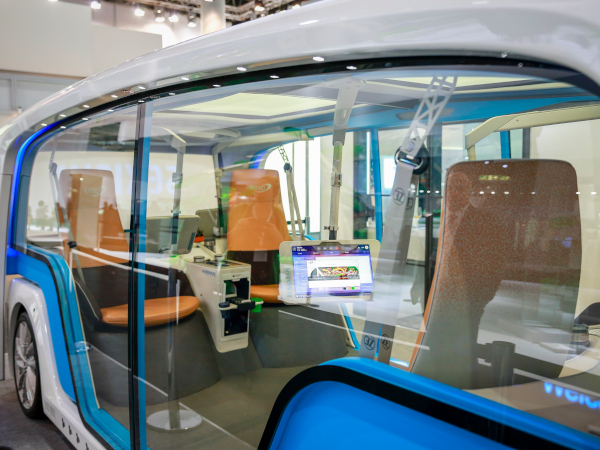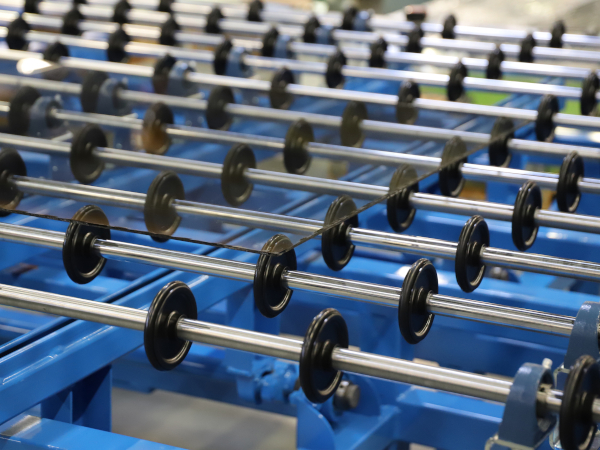Date: 20 October 2014
Even though it is made by basic, abundantly available ingredients like sand, potash, soda and lime, it has become nowadays part of complex high tech products.
Thanks to its excellent optical properties, resistance to scratches, chemicals, UV light and diffusion barrier properties, it is the material of choice for applications – to name just a few examples – like solar panels, the encapsulation of OLED display or lighting devices and CMOS/CCD image sensors as well as touch screens in smart phones and tablets.
Miniaturization has been - and still is – a general trend in microelectronics. When looking at the evolution of electronic devices, they are becoming more compact from generation to generation. For this reason, the glass used in such devices has continuously shrunk in thickness and the amount of thin glass production with thicknesses in the low mm range (even entering the range well below 1 mm down to 100 µm) has increased strongly. Fortunately, optical inspection technology is able to keep up pace with these advancements in thin glass production.
Need for new inspection tools in thin glass production
The production of thin glass imposes challenges to glass makers: Making glass thinner and thinner is intrinsically connected to an increasing glass band speed at the cold end. Because thin glass is used to a large extent in microelectronics, more and more stringent criteria for glass defects in terms of smaller defect sizes and new defect types have to be addressed at a high detection speed.
At the same time, the product becomes more sensitive and is more susceptible to breakage due to its reduced thickness. Handling becomes more difficult and the product conditions are more instable in terms of shape and position deviations due to the ability of thin glass to flex. Robust and reliable inspection technology has to adapt to these new boundary conditions.
Camera-based defect inspection
The detection of different glass defects (such as top and bottom tins in float, bubbles, knots, stones) and their correct automated classification into different types requires several detection channels such as bright field, reflection and (near) dark field. Only the combination of the information acquired from all channels does allow the unambiguous identification of the correct defect type. Unambiguously identifying glass defects help to minimize the number of misclassified defects and to keep fake detection and defect misses low.
The increasing speed of the glass band (when reducing glass thickness) with at the same time high spatial resolutions required and different (up to 5) detection channels is calling for new concepts of parallelization of detection. Conventional inspection technology is mostly using a serial data acquisition approach, where all channels are being read in a serial fashion one after the other. This approach is easily limited by the maximum scan frequency of the camera used, because the effective scan frequency is the actual maximum camera scan frequency divided by the number of channels..jpg)
Typical inside view of a defect scanner
Our approach is using a RGB detector system, where channel separation is accomplished by illumination with light of different wavelengths.
The wavelength-selective sensitivity of the RGB-sensor CCD line detector does have almost no cross talk between channels. The maximum scan frequency is no longer limited by the number of channels, but only by the camera itself. In consequence, the detection of small defects (down to 50 µm and beyond, depending on the number of cameras) becomes possible at a high glass band speed with high resolution in both lateral directions.
Optical metrology – combined glass thickness and stress measurement
Glass thickness and stress are commonly measured inline at the cold end by sensors traversing perpendicular to the travel direction of the endless glass band.--- The process of producing thin glass intrinsically imposes a high glass band speed at the cold end. So as to achieve a dense mesh of high resolution data when sampling the glass band, a sensor travel speed in the range of a few meters per second is desirable so as to achieve a spatial lateral resolution in the mm range.
dr.schwab developed a combined stress and glass thickness sensor which can be accommodated in one sensor head housing and needs just one traversing unit, thus saving space and cost. The glass stress measurement is accomplished by laser polarometry (relative birefringence) and is over a wide range tolerant to variations of glass height and tilt.
The measurement of the glass thickness is done by laser interferometry for thin glass or laser triangulation for larger glass thicknesses. For thickness measurements however, height variations and tilt of the glass do influence the measurement result. So as to achieve a robust, stable and correct measurement of the glass thickness, these variations can be eliminated inline by a redundant symmetrical optical setup that yield besides the property ‘glass thickness’ also the property ‘glass band tilt’ and ‘height drift’ and take them into consideration for automated correction. This feature is in particular useful for thin glass, where height drifts and tilted glass on the conveyor is more common than for several mm to cm thick glass.
Benefits of process statistics
Combining the information of both metrology (e.g. glass thickness and stress measurement) and camera-based vision techniques (for glass defect detection) and subsequently feeding them – thanks to the abundance of data acquired inline - into process statistics tools reveals useful information on systematic product parameter variations thus allowing the improvement of process capability. Glass makers benefit directly from higher yields and get a better handle on running their process more systematically with tighter specification limits or higher process capability indices.
Information to dr. schwab:
New member of the Grenzebach Group since July 2013 With their almost 40 employees dr. schwab Inspection Technology GmbH in Aichach is a worldwide leader in systems for process inspection in CD/DVD and Blu-ray disc production.
With the experience of dr. schwab Inspection Technology in the areas of optical inspection and optical measurement techniques, Grenzebach is strengthening their portfolio in all divisions.
dr. schwab Inspection Technology GmbH Industriestr. 9 86551 Aichach Phone: +49 8251 9008-0 Fax: +49 (0)8251 9008-22 www.schwabinspection.com Contact Person: Dr. Ulrich Neuhäusler COO







Add new comment